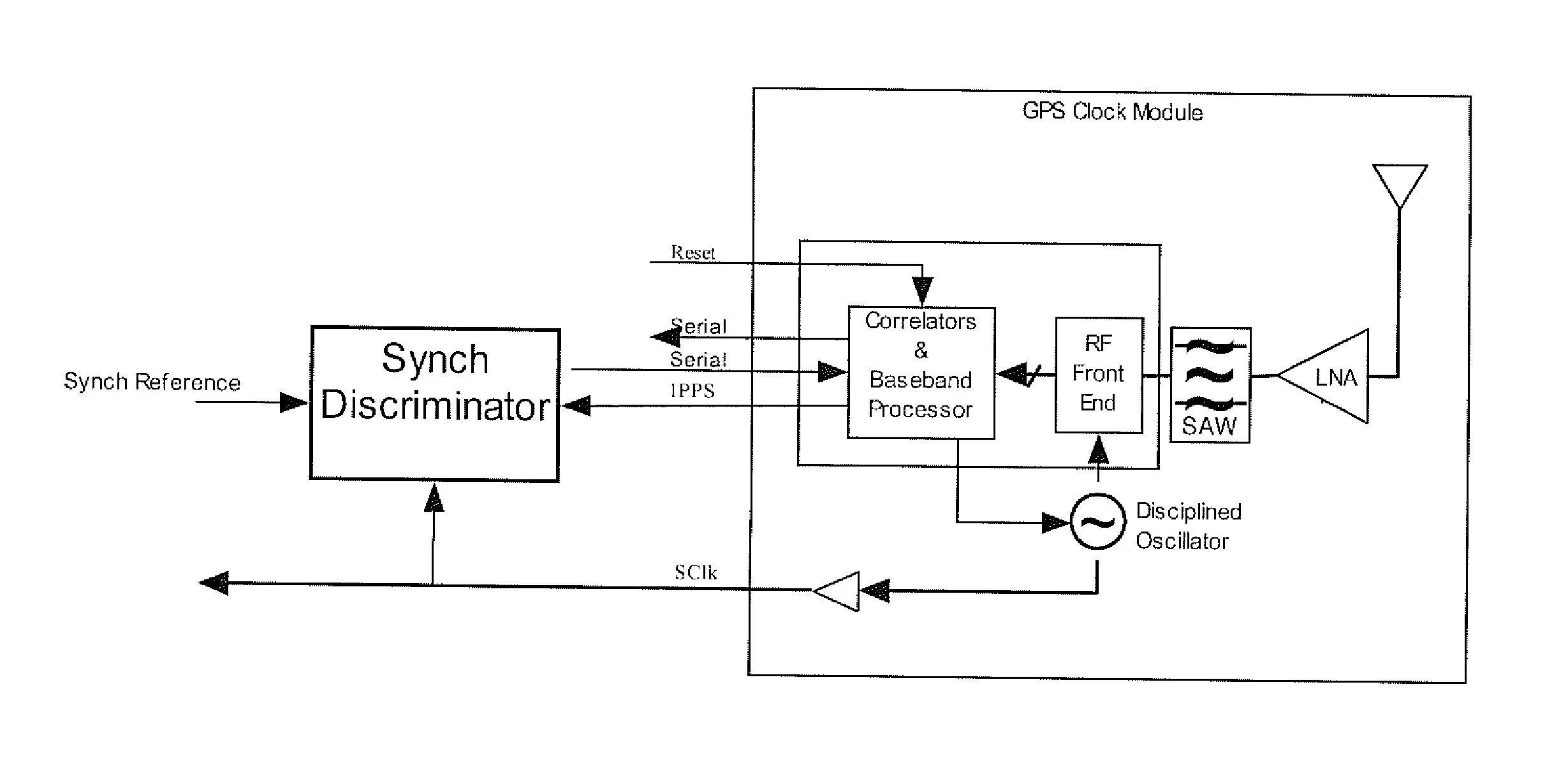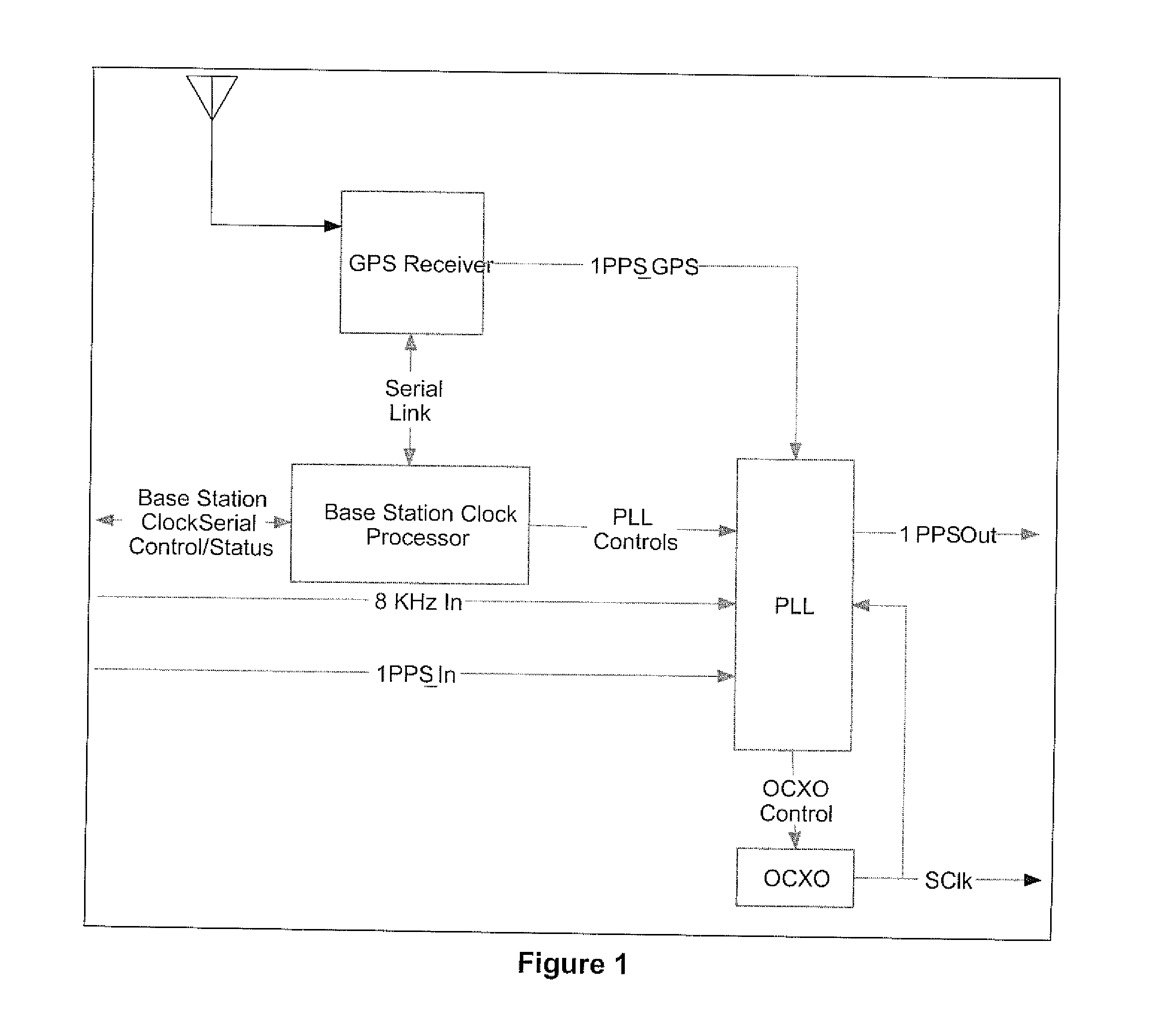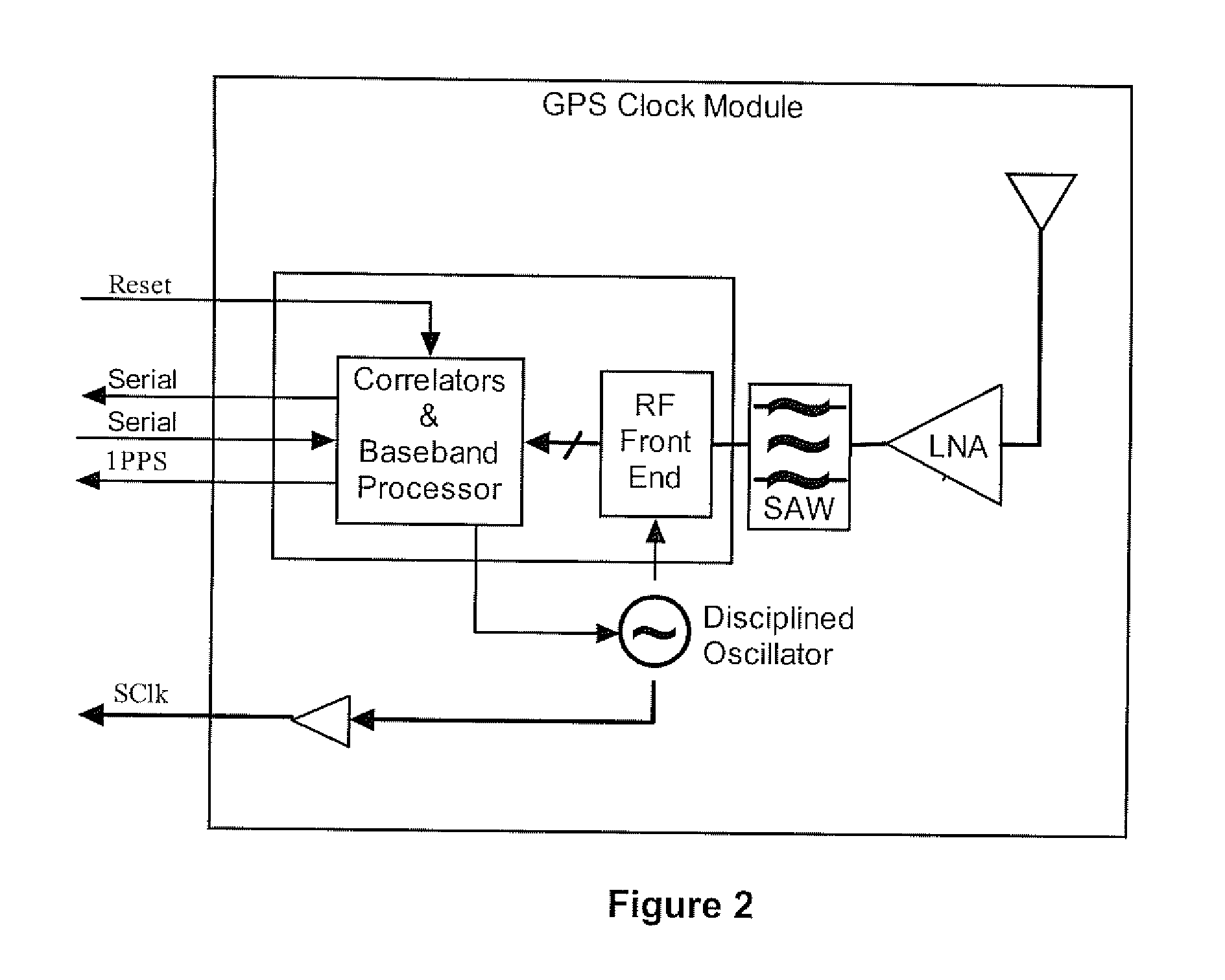Gps-based multi-mode synchronization and clocking femto-cells, pico-cells and macro base stations
a multi-mode, macro base station technology, applied in the direction of generator stabilization, electronic time-pieces, wireless commuication services, etc., can solve the problems of ocxo incorporation, call loss, and inability to synchronize and clock wireless devices, so as to improve interface capabilities and firmware, the effect of enhancing the interface and minimising the additional cos
- Summary
- Abstract
- Description
- Claims
- Application Information
AI Technical Summary
Benefits of technology
Problems solved by technology
Method used
Image
Examples
Embodiment Construction
Hardware Integration Schemes
H / W Integration Scheme 1
[0028]FIG. 3 illustrates a minor modification of the GCM firmware to facilitate a holdover backup facility and the way in which this is integrated into the femto-cell. The femto-cell circuit incorporates a synch discriminator circuit that measures the error in the 1PPS with reference to an independent synchronization reference. It passes this measurement back to the GCM via the serial port.
[0029]Note that the 1 PPS is coherent with SCIk and hence SCIk may be used within the synch discriminator to precisely interpolate between the 1 PPS and an external reference event.
[0030]The synchronization reference may be derived using any available Non-GPS synchronization scheme and the synch discriminator circuit may be implemented using a combination of hardware and firmware. The synch error passed to the GCM should also include an estimate of the first order error statistics (e.g. standard deviation) in the error measurement. Alternatively ...
PUM
 Login to View More
Login to View More Abstract
Description
Claims
Application Information
 Login to View More
Login to View More - R&D
- Intellectual Property
- Life Sciences
- Materials
- Tech Scout
- Unparalleled Data Quality
- Higher Quality Content
- 60% Fewer Hallucinations
Browse by: Latest US Patents, China's latest patents, Technical Efficacy Thesaurus, Application Domain, Technology Topic, Popular Technical Reports.
© 2025 PatSnap. All rights reserved.Legal|Privacy policy|Modern Slavery Act Transparency Statement|Sitemap|About US| Contact US: help@patsnap.com



